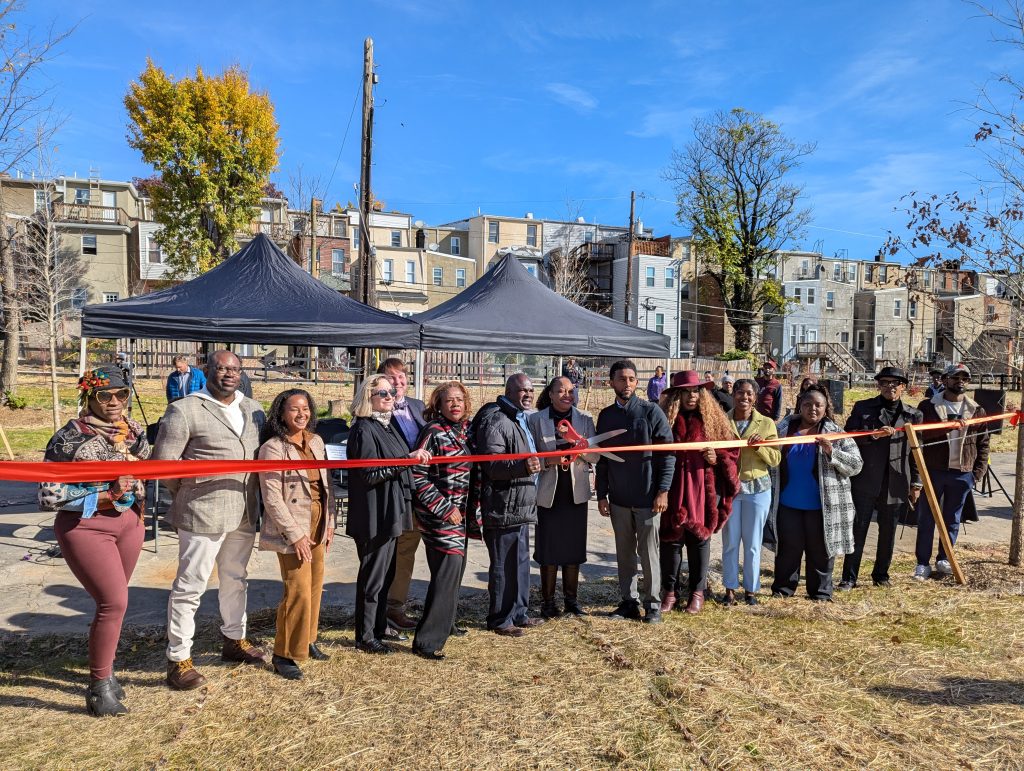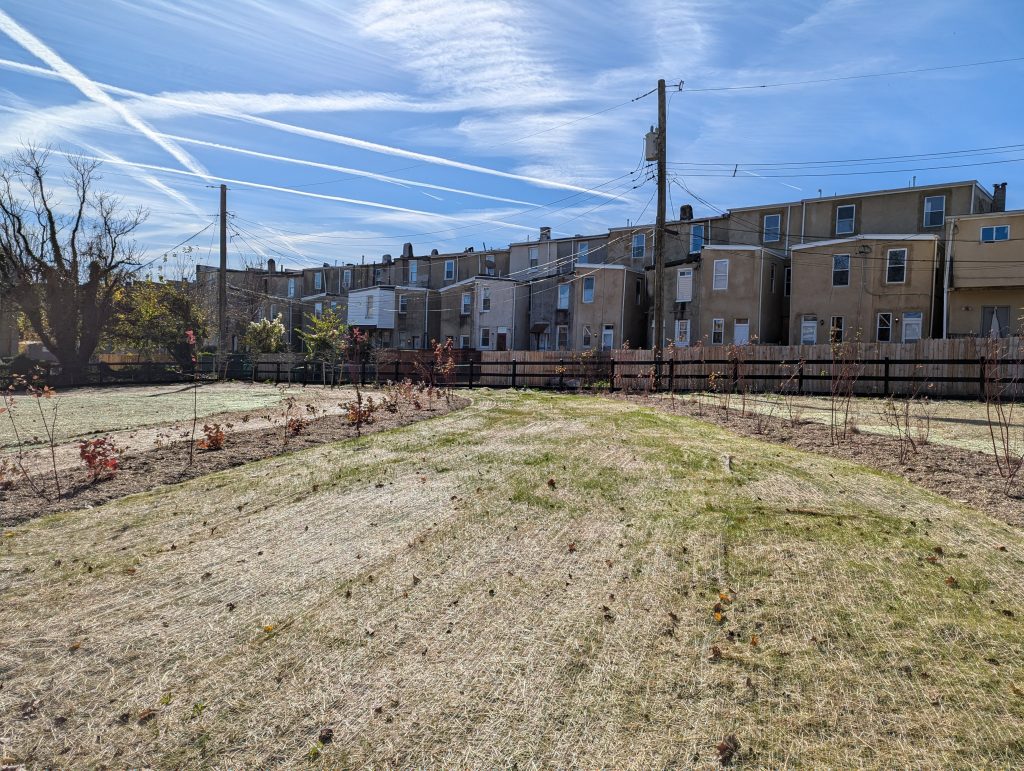With DNR support, Etting Street Green Space creates resiliency in underserved area

Government and nonprofit officials and community members cut the ribbon on the Etting Street Green Space. Photo by Joe Zimmermann/DNR
Over the years, a block in the Druid Heights neighborhood in West Baltimore had become a dumping ground for old mattresses, broken appliances, and rubble.
But now, the site is transformed. Where heaps of trash had once covered enough surface that they increased flood risk to the area, there’s now a green space, with native trees, flood mitigation, and place for the community to gather.
On Wednesday, state and local officials and community leaders cut the ribbon on the Etting Street Green Space project.
“For many years this was a dumping site in the community where illegal dumping and environmental crimes took place on a daily basis,” Tavon Benson, director of outreach for the Druid Heights Community Development Corporation, said at the event. “The community was able to transform this lot into a beautiful space offering stormwater management, future artwork and a safe place for residents to gather.”
The Maryland Department of Natural Resources provided $200,000 to support the project, which the department received from the Environmental Protection Agency through the Infrastructure Investment and Jobs Act, known as the Bipartisan Infrastructure Bill.
The funding helped to remove illegal dumping and replace impervious surfaces with native plants as well as bioswales. The new channels in the landscape will help direct and filter stormwater runoff. Along with more flooding, the dumping had increased pollution that previously ran off directly into storm drains and carried excess nitrogen, phosphorus, heavy metals, and other trash into the Jones Falls watershed.
Mariah Davis, DNR’s environmental justice officer, pointed to the project as an example of restoring an environmental wrong. The area surrounding Etting Street has high unemployment and low income, as well as many vacant lots.
“Every day, black and brown communities and low-income people face disproportionate impacts of pollution,” she said. “At the Department of Natural Resources, we’re committed to addressing environmental injustices. This isn’t the first project, and this isn’t the last.”
City officials hope that the green space will become a community hub and spur further economic investment. The grant will also help Druid Heights Community Development Corporation and the city implement one of the strategies outlined in the Baltimore Green Network plan, a multi-pronged city initiative to increase open space and connections across Baltimore.
“What we’re all doing now through this project and this labor of love together is showing people that the folks here are worth investing in,” Mayor Brandon Scott said. “I am just honored to be part of that. This now will be a shining gem for this community, something that we all can be very proud of.”
Construction at the site began in March 2023, and the landscaping and bioswales are now completed. The next phase will begin in December, with repairing of the road and the installation of a mural.
In addition to sports and community programs, the Druid Heights Community Development Corporation plans to offer workshops for sustainability and host cleanup programs so that neighborhood residents can become environmental stewards.
Sophia McMurray, a resident of the adjacent Gold Street, said she’s excited to see what’s happened in the green space and is glad that the neighborhood will be involved in taking care of the new area.
“This community needs something,” McMurray said. “That’s what they need in this neighborhood, somewhere for the people to go, to beautify.”

Grasses and trees are beginning to come in at the Etting Street Green Space, where environmental efforts will help filter stormwater entering the watershed and reduce flooding. Photo by Joe Zimmermann/DNR
By Joe Zimmermann, science writer with the Maryland Department of Natural Resources.
